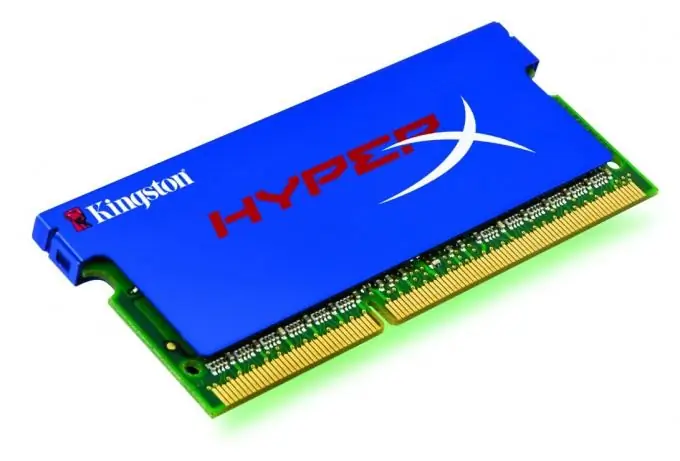There is never a lot of RAM. The volumes, which yesterday seemed inconceivable, are already commonplace today, and tomorrow they will seem simply ridiculous, so every person who uses a computer sooner or later has to buy additional memory.

Instructions
Step 1
Laptops use memory modules that are different from those that are installed in desktop computers. They are smaller and are called SODIMMs. But before buying memory, you need to determine what type of memory it is in a laptop: SDRAM, DDR, DDR2 or DDR3. Many laptops have colored stickers that indicate the type of processor, video card, memory, and hard drive.
Step 2
If there is no such sticker, you can install some diagnostic program, such as Si Soft Sandra, Aida or Everest and find out the type of memory of your laptop in it. You can also use a small program CPU-Z. You can download it from the manufacturer's website https://www.cpuid.com/softwares/cpu-z.html. Unpack the archive and run the cpuz.exe file. Here, on the Memory tab, opposite the Type label, the memory type will be written. The DRAM Frequency line will contain the frequency at which the memory operates
Step 3
The data obtained is already enough to buy memory for a laptop, but it can be done even easier. Turn off the laptop and remove the battery from it. Then, on the underside of the computer, remove the screw that secures the memory compartment cover. It is possible that this screw may be covered with a warranty sticker, so if the warranty has not yet expired, a similar operation should be performed at the service center of the store where you purchased the laptop. If there is no longer a guarantee, then open the cover and remove the memory module from there.
Step 4
To do this, bend the SODIMM retaining latches on the sides and pull the module up. Place the memory in an anti-static bag and show it to the manager at the computer store. He will offer you options for replacing the memory. Remember that new modules are best placed in pairs to support dual channel operation.
Step 5
The new memory should be installed in the reverse order - first put it on the contacts, then push the latches apart and push the module so that the latches will fix it. When inserting the SODIMM, pay attention to the cut on the module and do not place it upside down. Now you can close the lid, insert the battery, and turn on the laptop. The new memory will be detected automatically.






